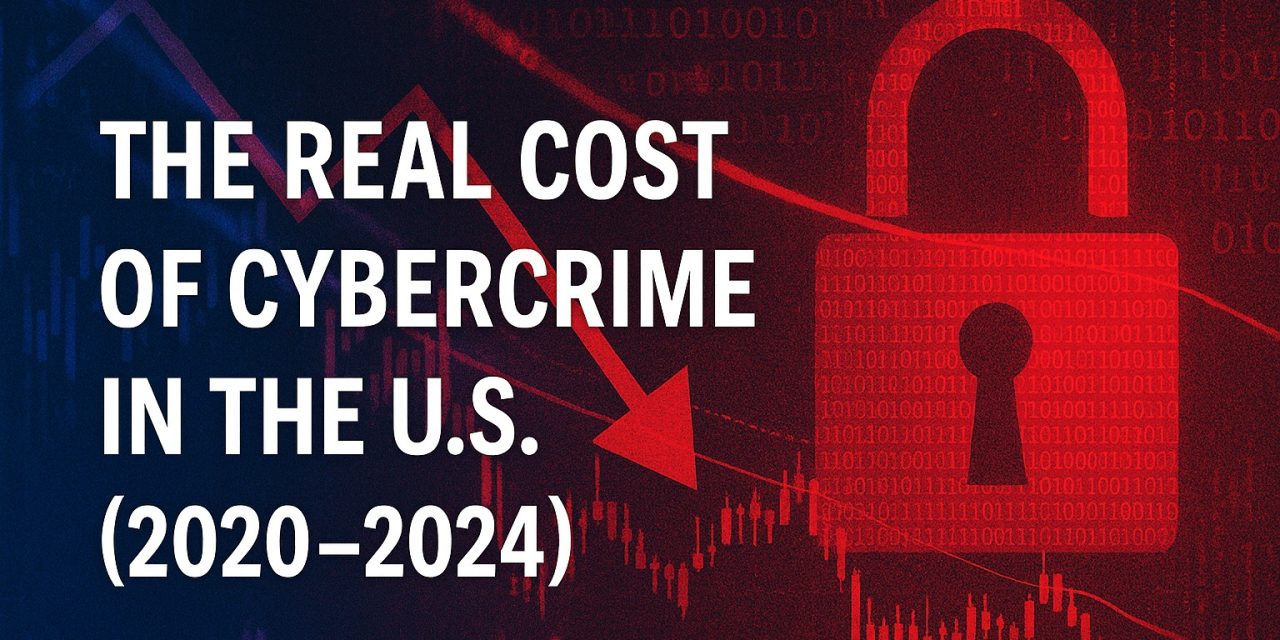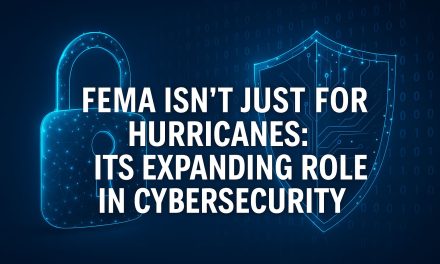I still remember reading the FBI’s IC3 report back in early 2021 and thinking, “Wow, $4.2 billion in cybercrime losses… is this the real cost of cybercrime in the U.S. we’ll see by 2024?” Turns out it was just the beginning.
But it did. It absolutely did.
Between 2020 and 2024, the financial cost of cybercrime in the U.S. didn’t just increase—it exploded. And if you’re in IT, security, or leadership in any organization (even a small one), this trend should worry you. Because what used to be a background risk has now turned into a recurring, predictable, and business-threatening reality.
Let’s break it down.
Cost of Cybercrime: The Numbers. From Millions to Billions.
According to the FBI’s Internet Crime Complaint Center (IC3), the cost of cybercrime:
- In 2020, reported losses totaled $4.2 billion.
- In 2021, that jumped to $6.9 billion.
- By 2022, losses hit a staggering $10.3 billion.
That’s nearly $1 million lost every hour from cybercrime in 2022 alone.
Keep in mind: these figures only include what was reported. Experts estimate the real number may be double or triple, considering the underreporting by small businesses, municipalities, and even some enterprises trying to save face.
And this isn’t slowing down.
Top Threats: Ransomware, BEC, and Everything-as-a-Service
If you’re wondering what’s driving the surge, three words: BEC, Ransomware, Ecosystems.
- Business Email Compromise (BEC) continues to top the chart in financial damage. In 2022 alone, over $2.7 billion in adjusted losses were tied to BEC scams.
- Ransomware has shifted from “just encrypt and extort” to full-blown double and triple extortion, targeting backups, customer data, and now even public leaks. The Treasury Department estimated $886 million in ransomware payments in 2021—and that’s just what went through traceable financial systems.
- The rise of Ransomware-as-a-Service and plug-and-play phishing kits has lowered the barrier for entry. Organized groups operate with call center-like efficiency, complete with HR, support, and revenue-sharing models. They even have KPIs.
It’s Not Just the Fortune 500
One of the most persistent myths I still hear in business circles is that only big companies are targeted. That was maybe true a decade ago. Not anymore.
Small and mid-sized businesses (SMBs) are often hit harder—not because the ransom is higher, but because the recovery cost relative to their size is lethal. A recent CISA blog post noted that small businesses are 3x more likely to be targeted than large enterprises.
And when you think about it, it makes sense: outdated systems, weak IT staffing, poor cyber hygiene, and (most dangerously) a false sense of obscurity.
For restaurants, clinics, logistics companies, and local governments, a single attack can wipe out months of income, destroy trust, and in some cases, end the business altogether.
Beyond the Money: Downtime, Data Loss, and Reputation
Direct financial losses are just part of the story. The real cost often includes:
- Downtime: Entire operations halted for days or weeks.
- Regulatory fines: Especially in healthcare, finance, or education.
- Insurance premiums: Skyrocketing after just one incident.
- Customer churn: Trust takes years to build and minutes to lose.
- Employee burnout: IT and SecOps teams often scramble for weeks post-breach.
According to IBM’s 2023 Cost of a Data Breach Report, the average cost of a breach in the U.S. reached $9.48 million, the highest globally.
What This Means for IT Leaders
The days of treating cybersecurity as a checkbox item are over. If you’re a sysadmin, IT manager, or even a business owner reading this—this is your risk surface now:
- Every endpoint is a target.
- Every email is a potential threat vector.
- Every SaaS tool you use is an extension of your attack surface.
And yes, the cost of doing nothing is no longer theoretical. It’s documented, quantifiable, and climbing.
Final Thoughts: What Can We Do?
You can’t patch your way out of cyber risk. But you can:
- Invest in basic hygiene: MFA, backups, patching, and user training go a long way.
- Build a response plan: Even a simple playbook can reduce chaos during an incident.
- Leverage frameworks: NIST CSF, CIS Controls, and Zero Trust are not just for big tech.
- Measure and track: Security KPIs matter. Downtime, phishing susceptibility, patch latency—these are business metrics now.
Let’s Not Wait for the Next Report
By the time the next IC3 report comes out, we’ll likely be talking about $12 billion or more in losses.
If your business hasn’t had its wake-up call yet, maybe this is it.
Let’s stop treating cybercrime as an IT-only issue. It’s an economic one. A national one. And for many small businesses out there, a life-or-death one.
Want to learn how to secure your business without going broke? Subscribe to ITGuru365 and get field-tested cybersecurity advice from someone who’s been in the trenches.
Stay safe. Stay sharp.
Sources
- FBI IC3 – Internet Crime Report 2022
- U.S. Department of the Treasury – Sanctions and Ransomware (2021)
- IBM – Cost of a Data Breach Report 2023
- CISA – Secure Our World: Helping Small Businesses Address Cyber Threats
- White House – Executive Order 14028: Improving the Nation’s Cybersecurity
- National Cybersecurity Strategy (2023)






Comments